P Vargas-Pellicer
How should we store avian faecal samples for microbiota analyses? Comparing efficacy and cost-effectiveness
Vargas-Pellicer, P; Watrobska, C; Knowles, S C L; Schroeder, J; Banks-Leite, C
Authors
C Watrobska
S C L Knowles
J Schroeder
C Banks-Leite
Abstract
Analyses of bacterial DNA in faecal samples are becoming ever more common, yet we still do not know much about bird microbiomes. These challenges partly lie in the unique chemical nature of their faeces, and in the choice of sample storage method, which affects DNA preservation and the resulting microbiome composition. However, there is little information available on how best to preserve avian faeces for microbial analyses. This study evaluates five widely used methods for preserving nucleic acids and inferring microbiota profiles, for their relative efficacy, cost, and practicality. We tested the five methods (in-situ bead-beating with a TerraLyzer instrument, silica-bead desiccation, ethanol, refrigeration and RNAlater buffer) on 50 fresh faecal samples collected from captive House sparrows (Passer domesticus). In line with other studies, we find that different storage methods lead to distinct bacterial profiles. Storage method had a large effect on community composition and the relative abundance of dominant phyla such as Firmicutes and Proteobacteria, with the most significant changes observed for refrigerated samples. Furthermore, differences in the abundance of aerobic or facultatively aerobic taxa, particularly in refrigerated samples and those stored in ethanol, puts limits on comparisons of bacterial communities across different storage methods. Finally, the methods that did not include in-situ bead-beating did not recover comparable levels of microbiota to the samples that were immediately processed and preserved using a TerraLyzer device. However, this method is also less practical and more expensive under field work circumstances. Our study is the most comprehensive analysis to date on how storage conditions affect subsequent molecular assays applied to avian faeces and provides guidance on cost and practicality of methods under field conditions.
Citation
Vargas-Pellicer, P., Watrobska, C., Knowles, S. C. L., Schroeder, J., & Banks-Leite, C. (2019). How should we store avian faecal samples for microbiota analyses? Comparing efficacy and cost-effectiveness. Journal of Microbiological Methods, 165, https://doi.org/10.1016/j.mimet.2019.105689
| Journal Article Type | Article |
|---|---|
| Acceptance Date | Aug 15, 2019 |
| Publication Date | Aug 16, 2019 |
| Deposit Date | Aug 21, 2019 |
| Publicly Available Date | Aug 16, 2020 |
| Journal | JOURNAL OF MICROBIOLOGICAL METHODS |
| Print ISSN | 0167-7012 |
| Publisher | Elsevier |
| Peer Reviewed | Peer Reviewed |
| Volume | 165 |
| DOI | https://doi.org/10.1016/j.mimet.2019.105689 |
| Keywords | Avian faeces; DNA preservation; Gut microbiome; House sparrows |
| Public URL | https://rvc-repository.worktribe.com/output/1380863 |
Files
12322_How-should-we-store-avian-faecal-samples-for-microbiota-analyses-comparing-efficacy-and-cost-effectiveness.pdf
(917 Kb)
PDF
Downloadable Citations
About RVC Repository
Administrator e-mail: publicationsrepos@rvc.ac.uk
This application uses the following open-source libraries:
SheetJS Community Edition
Apache License Version 2.0 (http://www.apache.org/licenses/)
PDF.js
Apache License Version 2.0 (http://www.apache.org/licenses/)
Font Awesome
SIL OFL 1.1 (http://scripts.sil.org/OFL)
MIT License (http://opensource.org/licenses/mit-license.html)
CC BY 3.0 ( http://creativecommons.org/licenses/by/3.0/)
Powered by Worktribe © 2025
Advanced Search
